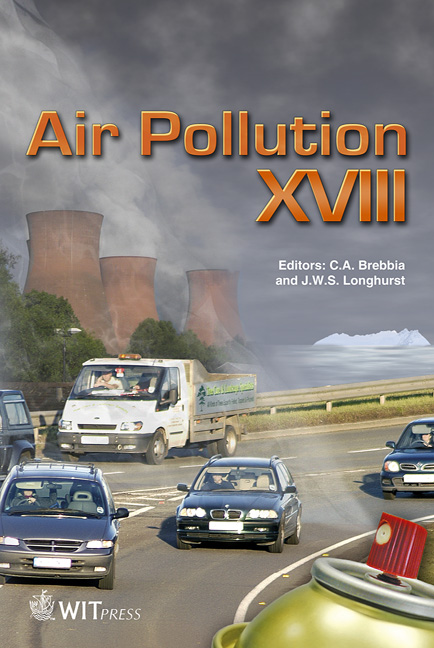Regulated Metal Levels In Particulate Matter In The Cantabria Region (Northern Spain) Using Multivariate Linear Regression (MLR)
Price
Free (open access)
Transaction
Volume
136
Pages
10
Page Range
49 - 58
Published
2010
Size
729 kb
Paper DOI
10.2495/AIR100051
Copyright
WIT Press
Author(s)
A. Arruti, I. Fernández & A. Irabien
Abstract
The levels and chemical composition of the particulate matter (PM) are linked to the effects of this atmospheric pollutant on human health. An assessment of the PM levels and its constituents present in the atmosphere is an important requirement of the air quality management and air pollution abatement. Taking into account that (i) EC Directives allow the Regional Government to assess the air quality by objective estimation and modelling techniques and (ii) the experimental effort required in the analysis of heavy metals in air, the present work aims to estimate the annual levels of the heavy metals regulated by the EC Directives (Pb in 1999/30/EC, and As, Ni and Cd in 2004/107/EC) in PM10 by means of multivariate linear regression (MLR). The main results show that although important deviations are found for individual measurements, the 2008 annual average metal concentrations are well estimated by the MLR technique at the studied areas. So, these estimations may be used by Regional Governments for the level assessment of regulated metals when their concentrations are below the lower assessment threshold. Keywords: multivariate linear regression, objective estimation, particulate matter, metal levels. 1 Introduction The European Union (EU) Framework Directive on ambient air quality and the daughter directives designate the use of modelling and estimation techniques for the assessment of air quality, especially for zones where concentrations of
Keywords
multivariate linear regression, objective estimation, particulatematter, metal levels





